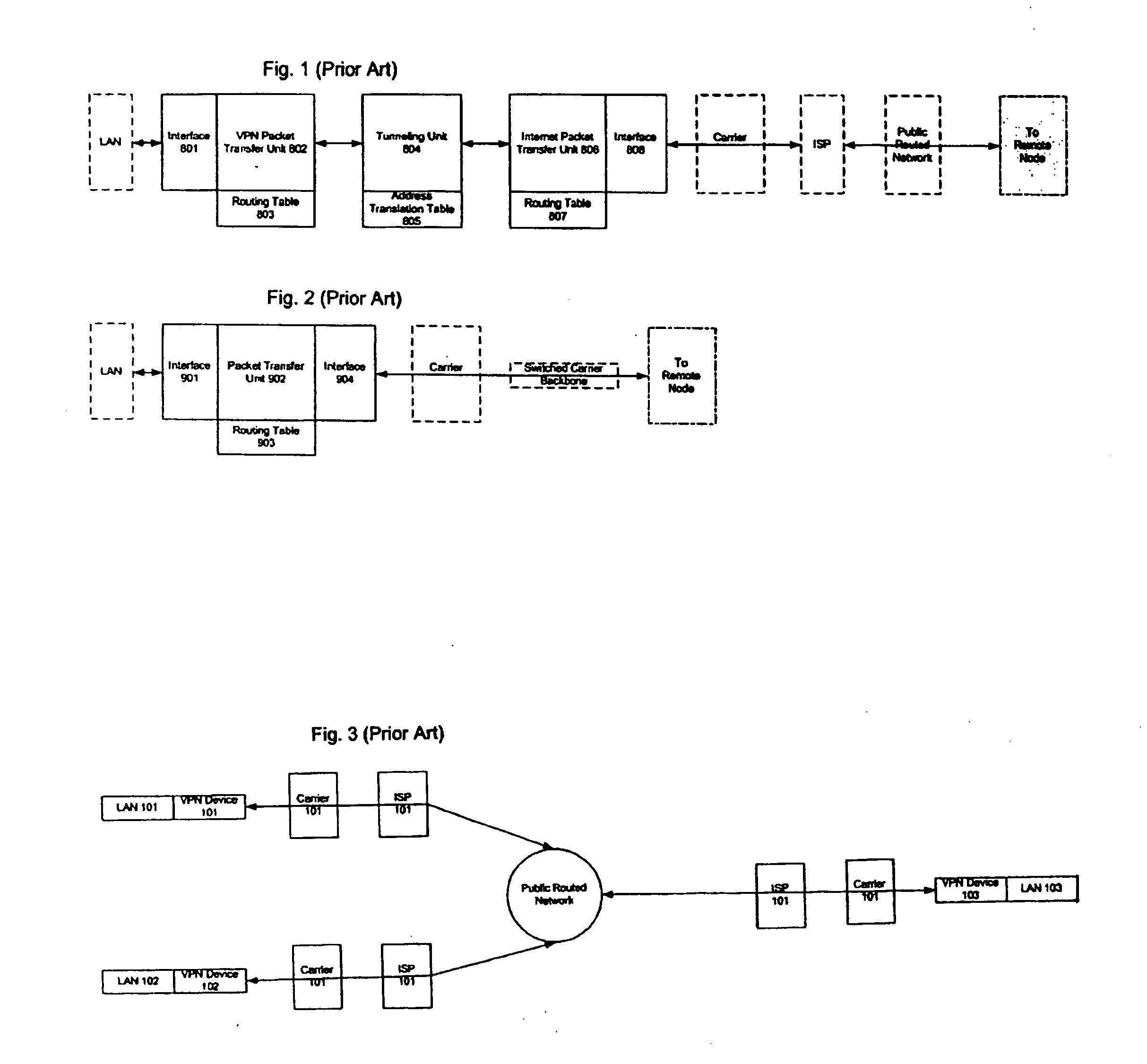Method and system for communicating and isolating packetized data through a plurality of last-mile carriers to form a multi-node intranet
a technology of packetized data and last-mile carriers, applied in data switching networks, digital transmission, electrical devices, etc., can solve the problems of reduced last-mile connectivity options of each node, high network cost compared to public routed intranets or vpns, and limitations of each current solution. , to achieve the effect of reducing the need for a cp device to perform network address translation
- Summary
- Abstract
- Description
- Claims
- Application Information
AI Technical Summary
Benefits of technology
Problems solved by technology
Method used
Image
Examples
Embodiment Construction
[0035] The invention is particularly applicable to computer implemented system for communicating and isolating packetized data and it is in this context that the invention will be described. It will be appreciated, however, that the system and method in accordance with the invention has greater utility.
[0036] Prior to describing the system and method in accordance with the invention, some description of the terminology that will be utilized below is provided. A node is a physical business or residential location. A carrier network is any facilities-based data or voice carrier with last-mile, local, regional, or national facilities (such as DSL, T1 lines, etc.) that provide layer 2 or layer 3 data communication access between one or more points of presence (POPs) and users. An ingress circuit bank consists of layer 1, layer 2 and layer 3 cross-connect circuits that provide data communication between POPs and the carrier networks. An aggregation unit (Agg. Unit) is a data switching d...
PUM
 Login to View More
Login to View More Abstract
Description
Claims
Application Information
 Login to View More
Login to View More - R&D
- Intellectual Property
- Life Sciences
- Materials
- Tech Scout
- Unparalleled Data Quality
- Higher Quality Content
- 60% Fewer Hallucinations
Browse by: Latest US Patents, China's latest patents, Technical Efficacy Thesaurus, Application Domain, Technology Topic, Popular Technical Reports.
© 2025 PatSnap. All rights reserved.Legal|Privacy policy|Modern Slavery Act Transparency Statement|Sitemap|About US| Contact US: help@patsnap.com



